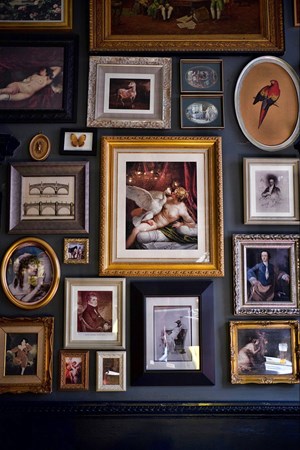
In the competitive world of real estate, making a lasting impression on potential buyers is essential. Beyond the standard staging and photography, art can play a pivotal role in elevating the visual appeal of a property and creating a unique, memorable experience.
Photo by tom balabaud: https://www.pexels.com/photo/framed-photo-lot-1579708/
In the competitive world of real estate, making a lasting impression on potential buyers is essential. Beyond the standard staging and photography, art can play a pivotal role in elevating the visual appeal of a property and creating a unique, memorable experience.
Explore how incorporating art into your real estate marketing strategy can set your listings apart and find valuable tips for a successful open house to maximize the impact of art in showcasing a property.
In the realm of real estate marketing, aesthetics matter. Art adds a layer of sophistication and character to a property, enabling potential buyers to envision themselves living there.
The Role of Art in Real Estate Marketing
Art has the potential to transform a house into a home, allowing buyers to connect emotionally with a property. Whether it's through carefully chosen artworks, sculptures, or unique decor, integrating art can significantly impact how a property is perceived and remembered.
The Visual Experience of Art
Art possesses the remarkable ability to weave a visual narrative that transcends the mere physical presence of a property.
When prospective buyers step into a space adorned with art, they aren't simply touring a house; they're immersing themselves in a captivating experience.
This journey transcends the ordinary and leaves a lasting impression, transforming a property into an inviting and appealing home.
The Art of Open House
Now, let's delve into the intricacies of hosting a successful open house that seamlessly incorporates art and crafts in an environment that's both enchanting and memorable.
Curating Art for the Space
Lighting and Presentation
Creating an Artistic Atmosphere
By thoughtfully integrating art into your open house, you transform a mere property viewing into an immersive, multisensory journey.
Through curated selections, strategic placement, and attention to detail, you create an environment where potential buyers can visualize themselves in a unique and art-infused living space.
Art transcends the ordinary, adding depth and character that can make a property truly unforgettable.
Showing Tips for Your Next Open House
Maximize the impact of art in showcasing a property with these valuable showing tips for your next open house:
Pre-Open House Preparations
Guided Tours and Engagement
Safety and Security
Final Considerations
Art is a powerful tool in real estate marketing, enhancing the visual appeal of a property and creating a unique experience for potential buyers.
By curating art thoughtfully and hosting successful open houses, you can showcase a property's full potential and leave a lasting impression.
When art and real estate come together, they create a visual narrative that captures the imagination of buyers, making it more likely that they'll see a house as their future home.
So, embrace the art of real estate marketing, and watch as your listings transform into captivating, memorable spaces that stand out in the market.

ArtDependence Magazine is an international magazine covering all spheres of contemporary art, as well as modern and classical art.
ArtDependence features the latest art news, highlighting interviews with today’s most influential artists, galleries, curators, collectors, fair directors and individuals at the axis of the arts.
The magazine also covers series of articles and reviews on critical art events, new publications and other foremost happenings in the art world.
If you would like to submit events or editorial content to ArtDependence Magazine, please feel free to reach the magazine via the contact page.